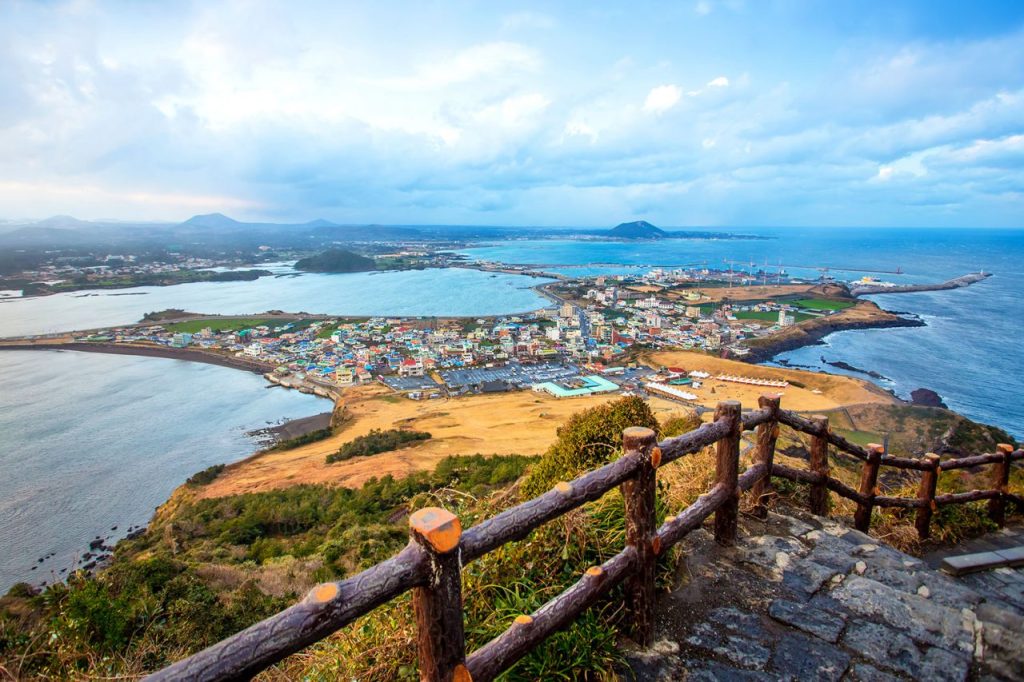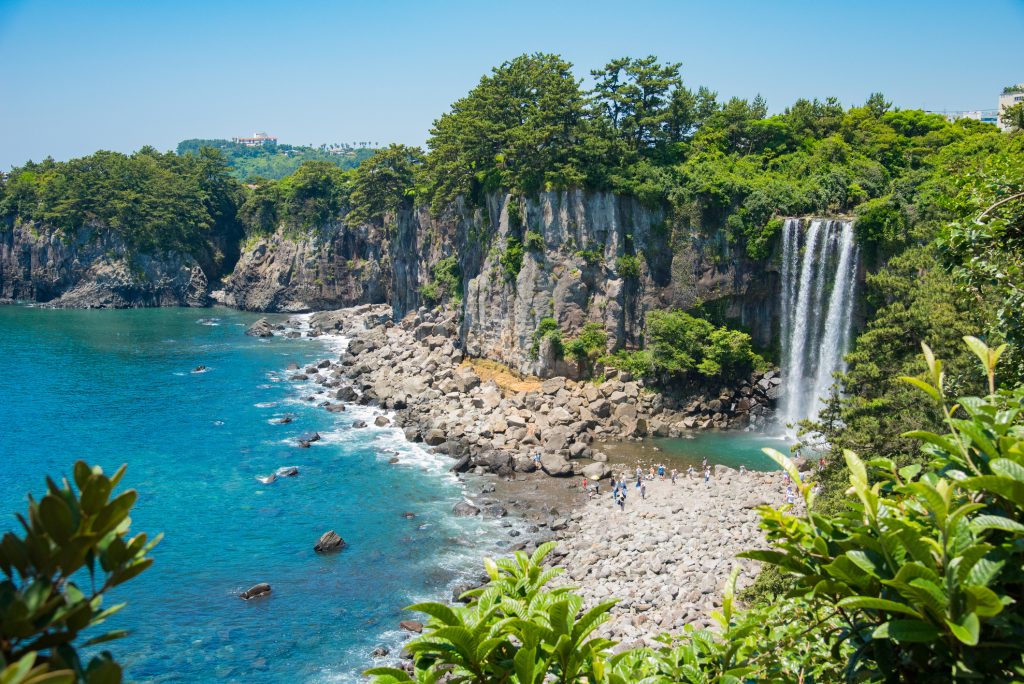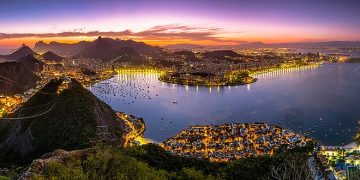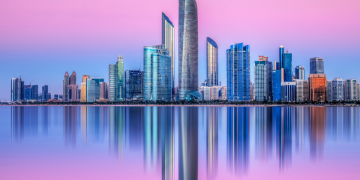In the vast waters of East Asia, there is an island with its unique natural scenery, profound cultural heritage and important geographical location, which has become a place for countless people to yearn for – this is Jeju Island in South Korea. As the largest island in South Korea, Jeju Island not only carries a rich history and culture, but also shows irreplaceable charm and value in Asia and even the world with its unique geographical features and vigorous economic development. This article will introduce Jeju Island’s history, culture, geography, economy, tourism and other aspects of the characteristics, combined with personal experience and feelings, for readers to present a comprehensive and vivid image of Jeju Island.
History: The interweaving of myth and reality
The history of Jeju can be traced back to ancient times, and its origins are closely linked to ancient Korean mythology. It is said that Jeju Island was born and developed by three gods named Yangeulna, Goeulna, and Bueulna in Maoheung (now known as Samseong) in the northern part of Mount Halla. They lived by hunting, until one day a wooden box floated from the sea containing three princesses from the “country of Bilang” (now Wando, South Jeolla Province) along with grain seeds, a calf and a dog. This event marked the beginning of Jeju’s agriculture and animal husbandry, and also laid the foundation for its later prosperity.
Over time, Goeuna’s descendants established the kingdom of Tamra on the island, which remained independent for a long time. It was not until the 10th year of King Sukjong of Goryeo (1105 AD) that Tamra was incorporated into a local administrative area and became part of Korea. Despite numerous regime changes and foreign invasions, Jeju has always maintained its unique cultural identity and historical heritage.

At the National Jeju Museum, you can get a glimpse of the historical sites of the Tamra Kingdom. Various cultural relics from the Neolithic Age to the Bronze Age and the Iron Age are displayed here, witnessing frequent exchanges between Jeju Island and its surrounding areas. In particular, the discovery of Takasani-style earthenware extended the cultural links of Jeju Island to Hainan Island in China and Okinawa in Japan, demonstrating its important position as an ocean hub.
Cultural treasure: the integration of diverse cultures
The culture of Jeju Island is diverse and rich, it combines Korean native culture, Chinese culture, Japanese culture and European culture and other elements. This cultural integration is not only reflected in architecture, art, religion and other aspects, but also has a profound impact on the life style and thinking mode of Jeju residents.
On Jeju Island, you can see traditional Korean houses, temples and palaces, which showcase the essence of Korean culture in unique style and exquisite craftsmanship. At the same time, there are many Chinese buildings and temples on the island, such as the Guanti Temple on Jeju Island, which is an important witness of the spread of Chinese culture in Jeju Island. In addition, Jeju Island was once a Japanese colony, leaving many Japanese architecture and cultural heritage, such as the former site of the Japanese Governor’s Office.
Jeju’s culture is also reflected in its unique folk customs. Seongfolk Village is one of the best preserved ancient villages on Jeju Island, where a large amount of tangible and intangible cultural heritage has been preserved. Visitors can experience the traditional Korean way of life here, taste authentic Korean food, and feel the strong local atmosphere.
- Geographical wonders: Harmonious coexistence of nature and humanity
Jeju Island is a volcanic island, formed by the accumulation of lava and ash in the Halla Mountains. Its topography is diverse, including plains, hills and lava formations, and its coastline is 256 km long. The highest mountain on the island, Mount Halla, at 1,950 meters above sea level, is not only the highest peak in South Korea, but also one of the iconic landscapes of Jeju Island.
The natural beauty of Jeju Island is breathtaking. There are spectacular volcanic landscapes, turquoise coastlines, rolling grasslands and rich flora and fauna. Sungsan Sunrise Bong is a huge rock at the eastern end of Jeju Island, formed by an underwater volcano eruption 100,000 years ago. Standing on the summit, you can overlook the vast sea and magnificent pastoral scenery. The land is a wide coastal cliff grass, in March and April every year when rape flowers bloom, a golden and blue sea and blue sky complement each other, beautiful.
In addition to the natural scenery, Jeju Island has many cultural attractions worth visiting. The Teddy Bear Museum is a place full of children’s fun and creativity, where a variety of teddy bear toys in different shapes are displayed, making people feel like being in a fairy tale world. “LoveLand”, a sex theme park on Jeju Island, offers visitors an alternative viewing experience with bold and unique sculptures that illustrate the themes of human sexuality and love.
Economic artery: two-wheel drive of tourism and agriculture
The economy of Jeju Island is dominated by tourism and agriculture. The visa-free policy that has been in place since 2002 has greatly boosted Jeju’s tourism industry, attracting millions of foreign tourists every year. Among them, Chinese tourists occupy a considerable proportion and become an important source market of Jeju tourism.
Jeju Island has rich and diverse tourism resources, not only beautiful natural scenery and rich cultural heritage, but also perfect tourism facilities and service system. The Chinese Tourist Area is a comprehensive sightseeing park in Jeju Island, which integrates natural and artificial landscapes, and is an ideal place for tourists to relax and vacation. In addition, Jeju Island has many famous scenic spots such as Halla Mountain, Seongsan Sunrise Peak, Shiji Kokji, etc., attracting a large number of tourists to come to punch a card.
In addition to tourism, agriculture is one of the important economic pillars of Jeju Island. Citrus cultivation is one of the traditional industries in Jeju Island, where citrus is famous for its excellent quality and delicious taste. In addition, Jeju Island has also vigorously developed the seafood aquaculture industry and characteristic agricultural product processing industry and other industries, which has injected new vitality into the local economic development.
V. Global vision: The importance of Asia and the world
Jeju Island occupies an important position in Asia and even the world. As one of the representative tourist resorts in South Korea, Jeju Island not only attracts a large number of domestic and foreign tourists to visit, but also becomes an important window for South Korea to display its culture and tourism resources. By hosting various international events and festivals, Jeju Island continues to increase its international visibility and influence.
Jeju Island also has unique advantages in terms of geographical location. It is located at the intersection of the Korean Strait, the Jeju Strait and the Tsushima Strait, and is an important node connecting the maritime arteries of China, Japan and South Korea. This strategic location allows Jeju to play an important role in international trade and shipping. According to a report by the South Korean Customs Administration, a significant portion of South Korea’s imports of crude oil and European and American products are transshipped through Jeju. Therefore, the economic development and national security of Jeju Island are closely related to the sea.

- Personal Experience and feelings: the unique charm of Jeju Island
As a tourist lucky enough to set foot on this magical land of Jeju Island, I deeply feel the unique charm of Jeju Island. When I stood at the top of Mount Halla and looked around, I felt a sense of shock and awe. It was as if I could hear the beating of nature’s heart and feel its power and beauty across time and space.
While walking around the folk village, I was attracted by the ancient houses, village schools and stone statues. They quietly tell the history and cultural stories of Jeju Island, which makes me feel like I have traveled back in time. The authentic Korean food I tasted here made me linger, and the unique taste and texture made me unforgettable for a long time.
I also visited attractions such as a teddy bear museum and a sex theme park. These creative and interesting places let me feel the diversity and inclusiveness of Jeju’s culture. Here, I can freely release my imagination and creativity, and enjoy the unprecedented happiness and freedom.
Vii. Conclusion: Future Prospects of Jeju Island
Looking ahead, Jeju will continue to attract tourists and investors from all over the world with its unique charm and value. With the continuous development of tourism and the transformation and upgrading of the agricultural industry, Jeju Island’s economic strength and international influence will be further enhanced. At the same time, Jeju Island will continue to strengthen exchanges and cooperation with other countries and regions, and jointly promote the cause of peace and development in Asia and the world.
As a vibrant and charming island city, Jeju not only carries a rich historical and cultural heritage, but also shows unlimited potential and promise with its unique natural scenery and vigorous economic development. I believe that in the coming days, Jeju Island will become a place for more people to yearn for, and become a shining pearl in Asia and even the world.





















